
Warhammer 40,000 is a miniature wargame produced by Games Workshop. It is the most popular miniature wargame in the world, and is particularly popular in the United Kingdom. The first edition of the rulebook was published in September 1987, and the tenth and current edition was released in June 2023.
Galactic empires are a science fiction setting trope, in which most or all of the habitable planets in the setting's galaxy are ruled by a single centralized political entity. Galactic empires most frequently appear in works in the sub-genres of science fantasy and space opera, although they may appear in other sub-genres as well. Works featuring galactic empires may have them as the story's focus, chronicling the empire's growth and/or decline. Alternatively, they may merely serve as a backdrop against which the events of the story play out.
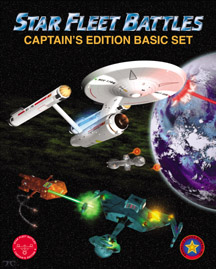
Star Fleet Battles (SFB) is a tactical board wargame set in an offshoot of the Star Trek setting called the Star Fleet Universe. Originally created in 1979 by Stephen V. Cole, it has had four major editions. The current edition is published by Amarillo Design Bureau as Star Fleet Battles, Captain's Edition.

Master of Orion is a turn-based, 4X science fiction strategy game in which the player leads one of ten races to dominate the galaxy through a combination of diplomacy and conquest while developing technology, exploring and colonizing star systems.
Battlefleet Gothic is a naval miniature wargame that was produced by Games Workshop from 1999 to 2013 with Andy Chambers as the primary developer. A spin-off of the science-fantasy setting of Warhammer 40,000, the game has players command fleets of large spaceships belonging to one of several spaceborne factions. Although the wargame's miniatures and rulebooks are no longer supported by Games Workshop, two video game adaptations have been made since its cancellation in 2013.

4X is a subgenre of strategy-based computer and board games, and includes both turn-based and real-time strategy titles. The gameplay generally involves building an empire. Emphasis is placed upon economic and technological development, as well as a range of military and non-military routes to supremacy.
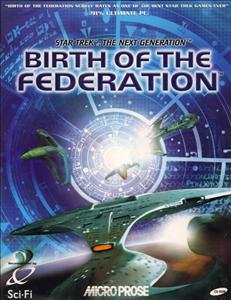
Star Trek: Birth of the Federation is a 4X turn-based strategy video game developed by MicroProse and published by Hasbro Interactive. The game was initially released in 1999 for Windows personal computers.

Imperium Galactica is a 4X video game, developed by Digital Reality. The same company would later make its sequel, Imperium Galactica II, in 1999. Imperium Galactica was published and distributed by GT Interactive in 1997. The soundtrack is the work of Tamás Kreiner. Nexus: The Jupiter Incident, developed by the Hungarian-based Mithis Entertainment, was originally planned and designed as Imperium Galactica 3 but in development renamed and refocussed to a real-time tactics game. The game was re-released in 2016 on GOG.com with support for Windows.

Galactic Civilizations II: Dread Lords is a 4X turn-based strategy by Stardock for Microsoft Windows. It is the sequel to the 2003 game, Galactic Civilizations, and was released at retail and on Stardock's online subscription service, TotalGaming.net, on February 21, 2006. An expansion, Dark Avatar, was released in February 2007. A second expansion, Twilight of the Arnor, was released in April 2008.
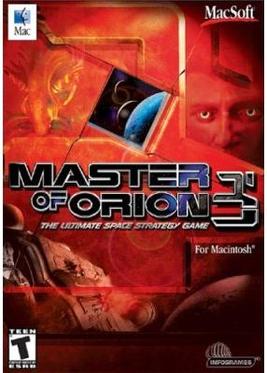
Master of Orion III is a 4X turn-based strategy game and the third in the Master of Orion series. Master of Orion III was developed by Quicksilver Software and published by Infogrames Interactive on February 25, 2003.
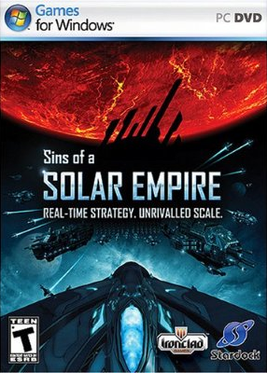
Sins of a Solar Empire is a 2008 science fiction real-time strategy video game developed by Ironclad Games and published by Stardock Entertainment for Microsoft Windows operating systems. It is a real-time strategy (RTS) game that incorporates some elements from 4X games; its makers describe it as "RT4X". Players are given control of a spacefaring empire in the distant future, and are tasked with conquering star systems using military, economic and diplomatic means.

Warhammer 40,000: Dawn of War – Dark Crusade is the second expansion to the real-time strategy video game Warhammer 40,000: Dawn of War developed by Relic Entertainment and published by THQ. Based on Games Workshop's tabletop wargame, Warhammer 40,000, Dark Crusade was released on October 9, 2006. The expansion features two new races, the Tau Empire and the Necrons. Including the Imperial Guard from Dawn of War's first expansion pack Winter Assault, a total of seven playable races in this expansion.

Lost Empire is a 4X turn-based strategy video game developed by Pollux Gamelabs and released in June 2007.

Supreme Commander: Forged Alliance is a stand-alone real-time strategy video game released at the end of October, 2007 as the expansion to Supreme Commander. The second title in the franchise, it was similarly developed by Gas Powered Games and published by THQ.

Warhammer 40,000: Dawn of War – Soulstorm is the third expansion to the real-time strategy video game Warhammer 40,000: Dawn of War, developed by Iron Lore Entertainment. Like its predecessors, Soulstorm is based on Games Workshop's tabletop wargame Warhammer 40,000, and introduces a multitude of new features to the Dawn of War series, including two new playable factions in the form of the Imperial Sisters of Battle and the Dark Eldar. It is a stand-alone game and does not need the original Dawn of War disc to run, but players must have the prior games installed and valid cd-keys in order to play as anything but the two new factions online.
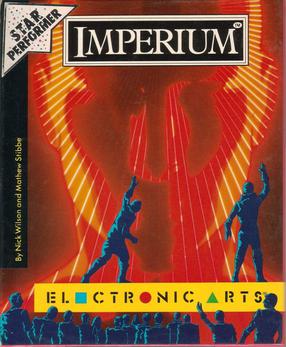
Imperium is a 4X strategy video game published by Electronic Arts in 1990 for the Amiga, Atari ST, and DOS.
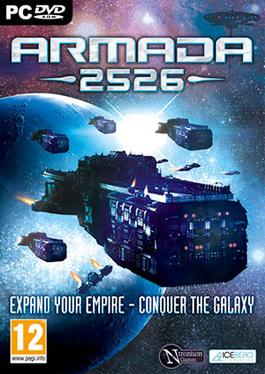
Armada 2526 is a 4X science fiction computer strategy game developed by British studio Ntronium Games, released in North America on November 17, 2009. Armada 2526 is an example of the space opera genre, and is the spiritual successor of the game Armada 2525, which was released by Interstel in 1991. Armada 2526 puts players in charge of a fledgling galactic empire, and they must attempt to explore the galaxy and expand their territory, while trying to destroy rival empires. The gameplay is a hybrid of turn-based and real-time time-keeping systems, and players can use military, diplomatic, economic and technological means to further their empires. The game received mixed reviews from critics.

StarDrive 2 is a 4X video game developed by Zero Sum Games. It is the sequel to StarDrive. Iceberg Interactive released it in 2015.

Horizon is a 4X video game developed by Canadian studio L3O Interactive and published by Iceberg Interactive in 2014.
















